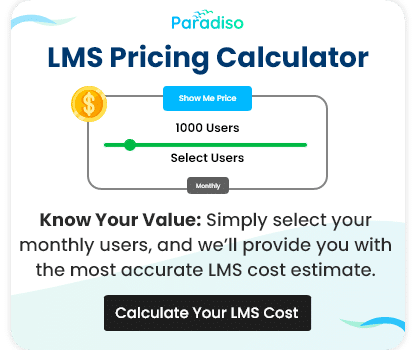Introduction
In today’s rapidly advancing digital education landscape, Learning Management Systems (LMS) are essential tools for delivering effective eLearning experiences. Among various platforms, NEO LMS has gained popularity due to its user-friendly design, comprehensive features, and scalability. It serves a wide range of users, including educational institutions, corporate trainers, and online course providers, offering tools for course management, engagement, assessments, and analytics.
However, as organizations’ needs evolve, many are exploring alternative LMS options. Factors like rising costs, feature limitations, integration challenges, and the desire for more customizable solutions drive this search. This guide aims to help you understand why you might look beyond NEO LMS, identify top competitors in 2025, and consider key factors—such as usability, features, scalability, and cost—that influence LMS selection. Whether you’re enhancing your current platform or switching to a new one, making an informed choice ensures your digital learning strategy aligns with organizational goals.
Chapter 1: Understanding NEO LMS – Features, Strengths, & Limitations
NEO LMS stands out for its ease of use, flexibility, and range of functionalities tailored for educational environments. Its intuitive interface simplifies onboarding for both educators and students, facilitating seamless navigation and content delivery. The platform supports multimedia content, assessments, and detailed grade management, enabling engaging learning experiences.
Key strengths include its mobile compatibility, integration with popular tools like Google Drive and Zoom, and comprehensive analytics for administrators. Its security features ensure data protection and compliance with regulations such as FERPA and GDPR. These attributes make NEO LMS a strong choice for institutions prioritizing usability and basic customization.
However, some limitations also exist. Customization options are not as extensive as those offered by open-source solutions like Moodle. Reporting capabilities, while functional, may lack the advanced analytics found in high-end enterprise platforms. Additionally, the ecosystem of third-party integrations is more limited, which might restrict scalability for large or specialized organizations. Learning to master advanced functionalities can also involve a learning curve.
Overall, NEO LMS’s strengths cater well to organizations seeking an easy-to-deploy, user-friendly platform, but its limitations highlight the importance of evaluating whether it fully meets future growth and customization needs.
Chapter 2: Top 10 NEO LMS Alternatives & Competitors in 2025
The evolving LMS market offers diverse platforms suited for different organizational requirements. Here are the top alternatives to NEO LMS in 2025, each bringing unique strengths:
- Moodle: An open-source powerhouse renowned for its extreme flexibility and extensive plugin ecosystem. Ideal for institutions wanting customizable, cost-effective solutions.
- Canvas LMS: Known for its modern, intuitive interface and seamless cloud integration, supporting personalized learning with robust assessment tools.
- TalentLMS: Focused on corporate training, it facilitates quick setup, branding, and compliance management, suited for enterprise environments.
- Docebo: Incorporates AI-driven personalization and social learning features, suitable for large organizations looking for automation and engagement.
- Schoology: Combines LMS with social collaboration tools, effectively serving K-12 and higher education institutions.
- Litmos: Emphasizes fast deployment, extensive content libraries, and mobile access, catering to business training needs.
- Thinkific: Designed for course creators and entrepreneurs, enabling easy course development, marketing, and monetization.
- Blackboard: Offers a comprehensive educational ecosystem with strong analytics and campus management features for higher education.
- SAP Litmos: Enterprise-level solution with multilingual capabilities, compliance tracking, and e-commerce features for global organizations.
- Paradiso LMS: A versatile, feature-rich platform that combines customization, integrations, gamification, and mobile learning, addressing complex organizational needs.
Each platform presents distinctive features suited for different organizational sizes, budgets, and learning strategies. Carefully aligning your needs with these offerings will help you select the best LMS alternative.
🚀 Ready to See Paradiso LMS in Action?
Let’s show you how Paradiso LMS can work for you.
Chapter 3: Key Factors to Consider When Choosing an LMS in 2025
Selecting the ideal LMS requires a strategic evaluation of several critical criteria. Here’s what to prioritize in 2025:
Usability and User Experience
An intuitive, easy-to-navigate interface promotes higher adoption and reduces training time. Clear content organization and minimal learning curves foster engagement among learners and administrators alike.
Integration Capabilities
The platform should seamlessly connect with your existing systems, such as HR platforms, CRM tools, and content repositories. Support for standards like LTI and robust APIs ensures smooth interoperability.
Customization and Scalability
Your LMS must be adaptable—allowing branding customization and personalized learning pathways. Scalability is crucial to support organizational growth, user expansion, and increased content volume without performance issues.
Pricing and Total Cost of Ownership
Consider initial costs, licensing fees, ongoing maintenance, and upgrade expenses. Open-source solutions can reduce upfront costs but may require technical management, whereas enterprise platforms often include comprehensive support.
Customer Support & Service
Reliable, timely support minimizes downtime. Look for providers offering multiple channels—such as 24/7 help desks, live chat, or dedicated account managers—and check customer reviews for qualitative insights.
Mobile Access & Accessibility
With mobile learning on the rise, a responsive design supporting smartphones and tablets is essential. Offline access, screen reader compatibility, and compliance with standards like WCAG ensure inclusivity.
Accessibility & Compliance
Ensuring the LMS adheres to legal standards and supports users with disabilities fosters equitable learning experiences. Features such as captions, adjustable fonts, and keyboard navigation are vital.
By carefully considering these factors, your organization can select an LMS that not only meets current needs but also adapts to future technological developments and growth trajectories.
Exploring Paradiso LMS: Features, Benefits, and How It Overcomes Common Platform Limitations
Paradiso LMS emerges as a comprehensive, versatile learning platform designed to address diverse organizational needs. Its extensive features and flexible architecture make it a compelling choice in 2025.
Rich Customization Capabilities
Paradiso LMS allows detailed tailoring of interfaces, branding, and learning paths. Whether adjusting themes, creating personalized dashboards, or designing specific workflows, this flexibility enhances user engagement and aligns with strategic goals.
Seamless Integrations
The platform supports integration with popular enterprise systems like Salesforce, SAP, and content repositories, enabling data synchronization and a unified management environment.
Engagement & Collaboration Tools
To boost learner motivation, Paradiso includes gamification—badges, leaderboards—and social features like discussion forums, peer assessments, and live chat, fostering collaborative learning.
Advanced Analytics & Reporting
Its robust reporting tools enable real-time tracking of learner progress, content effectiveness, and engagement levels. Customizable reports help identify gaps and inform continuous improvement.
Real-World Success & Addressing Limitations
Numerous organizations report that Paradiso LMS boosts engagement, reduces training costs, and enhances compliance. Its scalable, adaptable design tackles common platform issues like limited customization and poor integrations, making it a reliable solution.
Conclusion & Actionable Takeaways
As the eLearning landscape continues to evolve in 2025, selecting the right LMS is pivotal for organizational success. While NEO LMS offers a solid foundation with its focus on usability and basic features, alternatives like Moodle, Canvas, and Paradiso LMS provide advanced customization, integrations, and scalability suited for growing demands.
Key actionable insights include:
- Prioritize platforms with strong usability, seamless integrations, and mobile accessibility.
- Evaluate whether the LMS supports future growth through scalable architecture and advanced features like AI and gamification.
- Assess support services and compliance to ensure operational stability and inclusivity.
- Consider open-source options for budget-conscious organizations or those requiring extensive customization.
- Schedule demos or trial periods to test platform fit within your existing workflows.
Ultimately, the choice of LMS should align with your organization’s current needs and future ambitions. A strategic, well-informed decision will empower your digital learning initiatives, enhance learner engagement, and streamline administration—driving success in an increasingly digital world.











